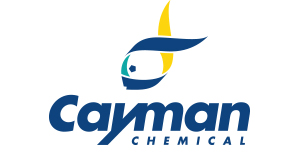Trilaciclib (hydrochloride), CAS 1977495-97-8
Trilaciclib (hydrochloride), CAS 1977495-97-8
SKU
CAY37297-10
Packaging Unit
10 mg
Manufacturer
Cayman Chemical
Availability:
loading...
Price is loading...
Formulation: A solid
Formal Name: 7′,8′-dihydro-2′-[[5-(4-methyl-1-piperazinyl)-2-pyridinyl]amino]-spiro[cyclohexane-1,9′(6′H)-pyrazino[1′,2′:1,5]pyrrolo[2,3-d]pyrimidin]-6′-one, dihydrochloride
Purity: ≥98%
Formula Markup: C24H30N8O • 2HCl
Formula Weight: 519,5
Shelf life (days): 1460
CAS Number: 1977495-97-8
Notes: Trilaciclib is an inhibitor of cyclin-dependent kinase 4 (Cdk4)/cyclin D1 and Cdk6/cyclin D3 (IC50s = 1 and 4 nM, respectively).{68334} It is selective for Cdk4/cyclin D1 and Cdk6/cyclin D3 over Cdk2/cyclin A, Cdk2/cyclin E, Cdk5/p25, Cdk5/p35, Cdk7/cyclin H/Mat1, and Cdk9/cyclin T (IC50s = 1,290, 2,510, 1,710, 1,240, 4,640, and 50 nM, respectively). It halts the cell cycle at the G1 phase in Cdk4/6-dependent Hs68 cells (EC50 = 30 nM) but not Cdk4/6-independent A2058 cells. Trilaciclib (10-1,000 nM) prevents DNA damage and apoptosis induced by the DNA enzyme topoisomerase I inhibitor camptothecin (Item No. 11694) in Hs68 cells used as a model of Cdk4/6-dependent hematopoietic stem and progenitor cells (HSPCs). It induces reversible cell cycle arrest of HSPCs in mice when administered at doses of 50, 100, or 150 mg/kg and prevents apoptosis of bone marrow cells induced by etoposide (Item No. 12092) in mice at 100 mg/kg. Trilaciclib (150 mg/kg) also prevents myelosuppression induced by 5-fluorouracil (5-FU; Item No. 14416) in mice. Formulations containing trilaciclib have been used in the treatment of late-stage small cell lung cancer to decrease the incidence of chemotherapy-induced myelosuppression.
Formal Name: 7′,8′-dihydro-2′-[[5-(4-methyl-1-piperazinyl)-2-pyridinyl]amino]-spiro[cyclohexane-1,9′(6′H)-pyrazino[1′,2′:1,5]pyrrolo[2,3-d]pyrimidin]-6′-one, dihydrochloride
Purity: ≥98%
Formula Markup: C24H30N8O • 2HCl
Formula Weight: 519,5
Shelf life (days): 1460
CAS Number: 1977495-97-8
Notes: Trilaciclib is an inhibitor of cyclin-dependent kinase 4 (Cdk4)/cyclin D1 and Cdk6/cyclin D3 (IC50s = 1 and 4 nM, respectively).{68334} It is selective for Cdk4/cyclin D1 and Cdk6/cyclin D3 over Cdk2/cyclin A, Cdk2/cyclin E, Cdk5/p25, Cdk5/p35, Cdk7/cyclin H/Mat1, and Cdk9/cyclin T (IC50s = 1,290, 2,510, 1,710, 1,240, 4,640, and 50 nM, respectively). It halts the cell cycle at the G1 phase in Cdk4/6-dependent Hs68 cells (EC50 = 30 nM) but not Cdk4/6-independent A2058 cells. Trilaciclib (10-1,000 nM) prevents DNA damage and apoptosis induced by the DNA enzyme topoisomerase I inhibitor camptothecin (Item No. 11694) in Hs68 cells used as a model of Cdk4/6-dependent hematopoietic stem and progenitor cells (HSPCs). It induces reversible cell cycle arrest of HSPCs in mice when administered at doses of 50, 100, or 150 mg/kg and prevents apoptosis of bone marrow cells induced by etoposide (Item No. 12092) in mice at 100 mg/kg. Trilaciclib (150 mg/kg) also prevents myelosuppression induced by 5-fluorouracil (5-FU; Item No. 14416) in mice. Formulations containing trilaciclib have been used in the treatment of late-stage small cell lung cancer to decrease the incidence of chemotherapy-induced myelosuppression.

 Deutsch
Deutsch










